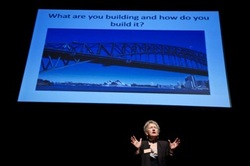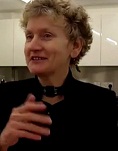
Software and Creating on the Keyboard
Meanwhile, last weekend I was teaching a two day seminar in Sydney (it was great, thanks to everyone for coming) and someone asked me at one point about typing and software. Here are some quick comments.
1. Always keep all of the lines you write for a speech. If you are a touch typist and you are typing your script, keep all of your various attempts in place in the speech but in a smaller font. Sometimes you need to resort to them. If you write in pen, put the various attempts in brackets or highlight them
2. If you don’t touch type, write in pen. Dialogue is too hard to create if half your mind is taken up with finding the right keys.
3. Learn to touch type. It saves ages.
4. Beware scriptwriting software. I love Final Draft and the like but they can make the telephone directory look like a masterpiece. Don’t just sit down and start writing with these programs because any old rubbish will look good. Plan!
5. Plan by notes, outlines and crucially, by using cardboard index cards to set out the beats so that you can see the whole film at a glance. Don’t use images of cards on a computer screen to plot your story progression. There are about eighty or ninety plot beats in a film, sometimes more. You can’t possibly get all of those on to one computer screen. You need distance on your film so that you can cut and rearrange beats. But do remember to number them, particularly each time you reorganize them, so there isn’t a calamity when they get dropped (which always happens).
 RSS Feed
RSS Feed


